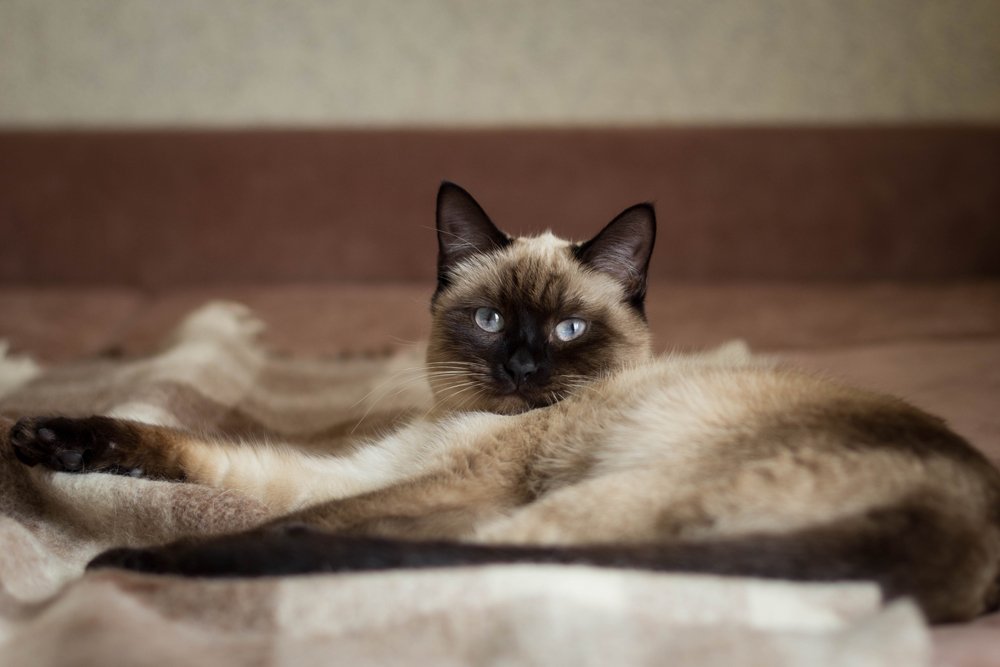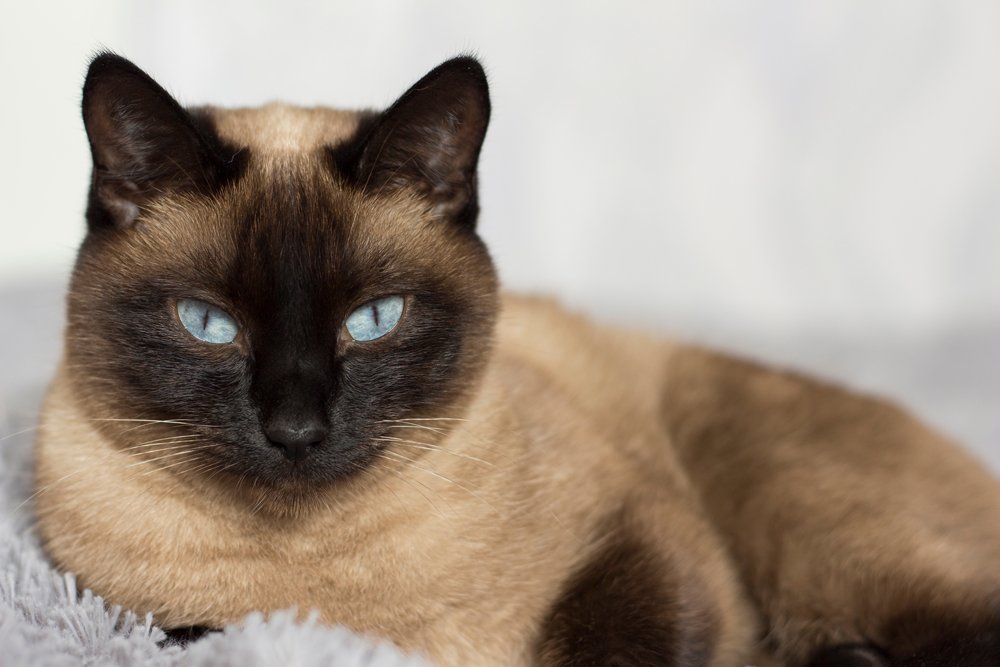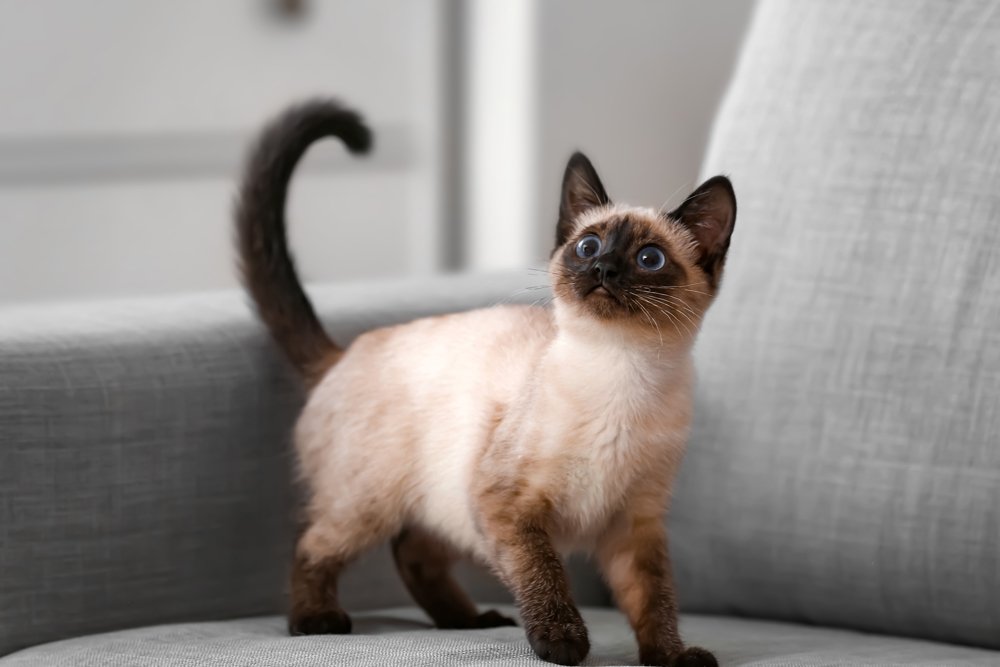The Real Housecats of Siam: Wichien Maat
The Real Housecats of Siam: Wichien Maat
วันที่นำเข้าข้อมูล 1 Sep 2022
วันที่ปรับปรุงข้อมูล 1 Sep 2022
From the Khao Manee granting safe travels to merchants, the Supalak elevating its owners to greater status, or the Si Sawat blessing newlyweds, Thailand has long seen mystical properties in its domestic cat breeds, but none are held in as high regard as the original Siamese Cat: the Wichien Maat.
For more than 700 years, the Wichien Maat has been kept in royal Thai courts, featured in sacred ceremonies, and even presented as diplomatic gifts, granting the breed a significant place in the history and traditions of Thailand founded on the belief that these regal shorthairs bring with them great fortune, prosperity, and stature.
Let’s dive into the characteristics of the regal Wichien Maat, the Thai beliefs surrounding the breed, and how it was cat-apulted into the mainstream.
Moon diamond

Source: Olga Starshova / Shutterstock.com
Famed Wichien Maat breeder and enthusiast Preecha Vadhana explains that the ancient Thai cat was exalted by the early Siamese for exhibiting a combination of preferred traits, deeming it auspicious.
“The division between auspicious and inauspicious cats was based on the belief held among ancient people that certain characteristics would bring fortune. The Supalak cat was a good choice for civil servants, while merchants would be better with the Wichien Maat… The characteristics of each of these types support different careers.”
Preecha Vadhana, founder of the Siamese Cat Bang Rak cattery
The features that make the Wichien Maat so valued include its distinct point coloration—darker shades of fur appearing on its face and extremities—triangular face, and its pale coat, from which its name, translating to “Moon Diamond,” is derived.
Thailand’s International Maew Boran Association writes that “in the older manuscripts… the cat with eight points is always named Maew Kaew, or ‘Jewel Cat’… Wichien Maat appears in the 1957 cremation volume for Somdet Phra Puttajan.”
The name change appears to coincide with the breed’s refinement over time, as its most desired features were accentuated over generations to concentrate the cat’s perceived metaphysical properties. The Cat Fanciers’ Association notes that Felis silvestris catus, in its original form, was “more compact… supple, with an apple-shaped head and short nose.”
Today, the carefully bred Wichien Maat has a “delicate pointed face, attenuated and delicate bone structure, lean musculature, and whippy tail.” They can range from 10–12 inches (25–30 cm) in height and 2.5–6 kg in weight.
Among cat-lovers, the breed is also coveted for its large almond-shaped eyes, which often come in a piercing blue, tiger-like tail, and most importantly, its friendly and affectionate temperament. So affable is this feline species, it’s most often compared to the Golden Retriever dog breed and has even been known to engage in games of fetch.
Fortuitous feline

Source: Linalyan / Shutterstock.com
The earliest documentation of the Wichien Maat and the beliefs surrounding it are found in the Tamra Maew or “Cat Poems.” The Tamra Maew are a series of manuscripts compiled during the reign of King Rama IV from 1851–1868 with sources dating to before the Ayutthaya War of 1765.
The Tamra Maew names Wichien Maat cats among 22 other breeds divided between auspicious or inauspicious. The beliefs documented in the manuscripts were so pervasive that only five of the feline types listed still remain today, with the rest bred out of existence.
The Wichien Maat is considered so valuable that according to most accounts, they were reserved exclusively for the royal palace up until the Ayutthaya era. The felicitous felines were kept by Siamese royal households to bolster their fortunes and even put to guarding temples—the most sacred of sites in Thai culture.
After the Ayutthaya era, however, the Wichien Maat was given a new noble duty, serving as diplomatic gifts presented by Thailand’s monarchs.
This practice was most prominent during the reign of King Rama V, who bestowed a pair of the cats upon French diplomat August Pavie in 1885. In 1904, during a visit to the Russian Empire, the Thai monarch presented one of his Royal Siamese cats as a gift to the daughter of Emperor Nicholas II.
More famously, King Rama V in 1884 gifted Pho and Mia to British Consul-General to Thailand Owen Gould, who saw the two become a popular display in the Crystal Palace Cat Show.
The first Wichien Maat on record to be permitted to leave the Kingdom, however, was simply named “Siam” and was delivered by U.S. Consul to Bangkok David Stickles to U.S. President Rutherford B. Hayes’s wife Lucy in the late 1870s in acknowledgement of the First Lady’s adoration for cats. In his accompanying letter, the diplomat noted that it was “the first attempt ever made to send a Siamese cat to America.
”These high-profile bestowments spread the image of the Wichien Maat as aristocratic and prized, driving its adoption internationally. By the middle of the 20th century, the Wichien Maat, referred to as the Siamese cat, had entered into popular culture, appearing in films such as Lady and the Tramp in 1955, The Incredible Journey in 1963, and as the titular feline of 1965’s That Darn Cat!
It should be noted here, that the Wichien Maat was so adored after being introduced to the West that avid breeders eventually brought about a distinct iteration, now referred to as the modern-style Siamese breed.
Cinema icon Elizabeth Taylor notably gifted fellow star James Dean a Siamese cat on the set of the film Giant in 1955, inducting him into a club of celebrities who favored the breed that includes Andy Warhol, Marilyn Monroe, and John Lennon.
Cat in the court

Source: Pixel-Shot / Shutterstock.com
While the Wichien Maat’s presence globally has been a colorful tale of diplomacy and glamor, it cannot be understated how closely tied to the royal institution they remain at home.
His Majesty King Bhumibol Adulyadej the Great famously cherished a Wichien Maat cat named Tito while residing at Villa Vadhana in Lausanne, Switzerland. The royal pet was named after Yugolsavian president Josip Broz Tito, the basis for the character of “Nai In” in Nai In Phu Pid Thong Lang Phra, a literary work by King Rama IX based on the book A Man Called Intrepid.
The most recent example of how the Wichien Maat holds great symbolic significance in Thailand however took place in 2019, at the Assumption of the Residence ceremony carried out as part of His Majesty King Maha Vajiralongkorn’s coronation.
Heralding the King taking up residence at the Grand Palace, the rite featured a Wilarn or ceremonial cat. According to the Ministry of Culture, the inclusion harkens back to an ancient Thai tradition of having a cat present during housewarming events, as they are seen as possessing the ability to always return home, to ward off evil, and to bring about blessings to a household.
For the royal proceeding, a Wichien Maat carefully selected for its pure coat color was carried into the palace at an auspicious time and placed on a mattress. The appointed cat bearer then performed a prayer, bidding happiness and abundant fortune for the occupant of the residence.
A good point
For more than seven centuries, the Wichien Maat has lived up to belief in its auspiciousness, uplifting the spirits of Thais with its presence in royal traditions, garnering international appreciation, and simply being a cherished companion. Even looking to the future, it would appear that the Wichien Maat’s enchantment remains strong.
“These cats are very much our national treasures,” said Preecha, who has devoted the Siamese Cat Bang Rak cattery to their preservation alongside other revered Thai breeds.
Kasetsart University lecturer Asst. Prof. Dr. Janjira Phavaphutanon has similarly been moved to maintain the Wichien Maat, viewing them as an integral part of feline history as the originator of other popular breeds, such as the Himalayan Cat and Persian Cat.
Whether science or supernatural, all evidence points to the Wichien Maat being a “jewel” of a cat.
สถานเอกอัครราชทูต ณ กรุงเตหะราน
Office Hours: Sunday to Thursday, 08:30-12:00 and 13:00-16:30 (Except public holidays)